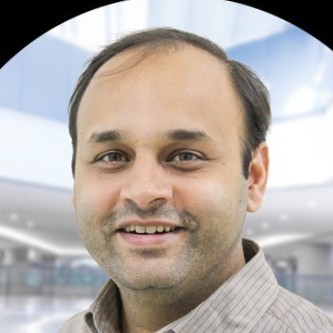In a world where the customer comes first, businesses must prioritize addressing customer concerns and expectations now more than ever before. It can no longer be about building a product and expecting it to sell in the market. Businesses must adopt a customer-centric approach. This approach allows businesses to focus on what the market and customers want and let those insights guide them to build a product that meets and exceeds those expectations.
Consequently, this shift in focus toward the customer has placed an increased responsibility on product engineering and development teams to conceptualize, innovate, develop, and deliver products that customers actually care about. The onus is on the product engineering teams to translate customer needs and expectations into product features, thereby driving superior customer value and engagement.
To make the customer the center of the product engineering and development process, businesses must focus on two important aspects – adopting a consultative approach to product engineering and realizing that research and development can no longer be a one-time activity at the beginning of the product design and development process.
A healthy mix of the two can be a potent combination that results in a customer-centric product strategy that is aligned with the organizational vision, roadmap, and budget. This, in turn, will shorten the time-to-market by creating an agile development environment and improve product development predictability and overall product profitability.
Customer Success with a Consultative Approach
Customer sensitization for early-stage product development is the first step to using a consultative approach in the Product Development Life Cycle (PDLC). Iterative customer consultations and feedback, looping back into the development process, is only doable with customer consent and a flexible approach to product engineering and development where the team is ready to pivot based on customer and market feedback.
This is best done when PDLC adopts short design and development sprints. With Minimum Viable Products (MVPs) and their user testing, businesses can avoid typical mistakes and gather feedback early on. Though it might seem chaotic and unplanned, it has the potential to work in the long run since the methodology takes care of successively reducing the margin of error and deviation from customer expectations. Access to early user feedback is also a game changer as it improves customer satisfaction and product market fit. This is the core of the lean product development methodology.
The consultative approach goes hand-in-hand with research and development. By bridging the gap between data and end-user, product engineering teams can revolutionize how businesses approach new product development.
Role of R&D in Product Engineering
The gap between product engineering and development and R&D is diminishing as businesses understand the importance of getting the right product to market. In a world with ample space for customers to voice their views and dislikes, businesses can no longer afford to create a product without proper market analysis. While data-driven product engineering offers a competitive edge, it is imperative to create an R&D mindset to develop commercially viable products and help meet customer expectations.
To truly adopt an R&D mindset, it is important to accept that the role of R&D is not limited to the initial phase of PDLC. Although R&D was once viewed as the first step in product engineering and development, businesses are exploring the concept of adopting an R&D mindset from start to finish. In the modern product engineering paradigm, a variety of technology choices are available.
They need to be evaluated along dimensions like ease of development and maintenance, security, scalability, being cloud agnostic (if applicable), time to market, lifetime costs of ownership, regulatory considerations, etc. Product engineering teams need to have the breadth of such expertise and sensitivity to customer needs to make the right choices. Often, short POCs or prototyping exercises are required to evaluate the choices properly. These also require the teams to be adept at quickly picking up new skills in frameworks, components, and architectures.
Hence, R&D needs to be a continuous process that is used to ensure that the technologies and products deliver experiences that are in line with customer and market expectations and regulatory requirements and have the potential to penetrate the market upon launch. The R&D mindset brings the research team to collaborate with product development throughout the PDLC to ensure that the customer always remains in focus. When R&D faces bottlenecks, it can have a serious commercial impact on the business. Hence, research and development has become a long-term investment that demands a symbiotic relationship between product engineering, market analysts, and top management.
Market innovation is key to success and to carve a place in the market. This is possible only when the R&D team keeps pace with upcoming technologies, commercial trends, and the constantly evolving customer expectations while bringing this knowledge to the engineering team.
When product engineering and development is in sync with a company’s overall strategy, it can reduce R&D costs, drive better market fit, and speed up new products to market. It can also improve customer satisfaction and help employees feel more engaged. To that end, more companies are leveraging consultative approaches to their advantage while keeping research and development at the forefront.
GS Lab | GAVS for Product Engineering
With our R&D driven development approach and deep understanding of core and next-generation technologies, GS Lab | GAVS can help you transform and develop new products at scale. Having developed more than 300 products, many of which are first-of-their-kind, our product engineering teams take ownership, go beyond the call of duty, and add value to our customers.
Our expertise across core technologies such as cloud, networking, and communications helps us improve your product performance dramatically while reducing costs. For more information, please visit https://www.gslab.com/product-engineering-and-development.

Author




